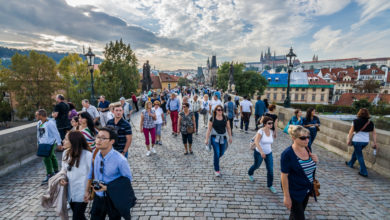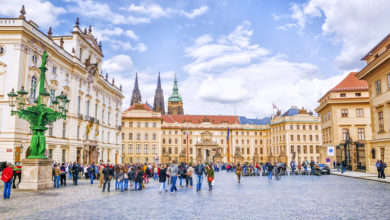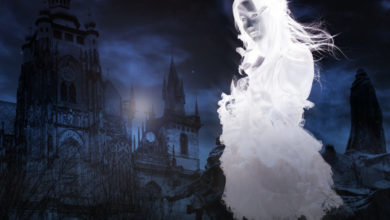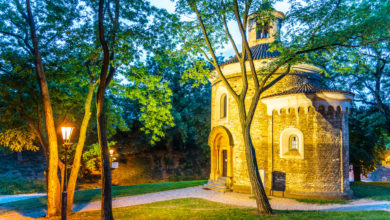The Royal Route Walk
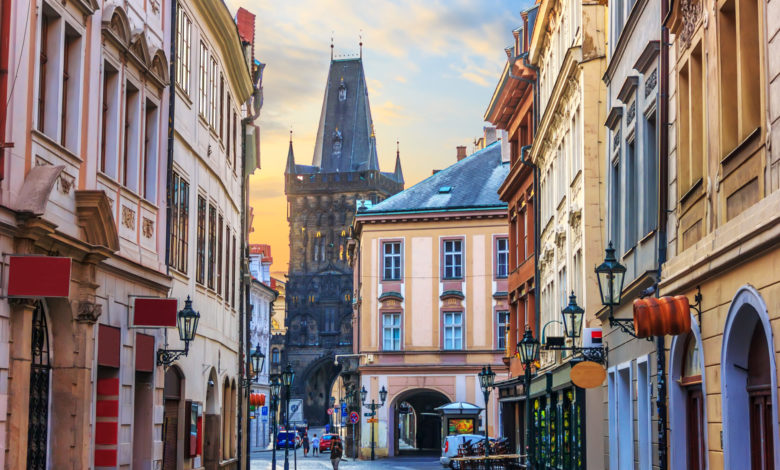
Between the 15th and 19th centuries, Czech monarchs on their way to coronation would process along what is known as the Royal Route. Over the years, this trail – which leads from the Royal Court up to the heights of Prague Castle – was processed by sundry Leopolds, Ferdinands, Charleses, Josephs, and Albert II of Habsburg, who was the first, back in 1438. Although the Royal Route itself is ancient, its moniker may have been acquired as late as 1955, following the reconstruction of many buildings that line it.
Coronation day was a massive event; premises along the way would be decadently festooned, and Praguers amassed in the streets… numbers, of course, depending on the popularity of the royal. On reaching the Castle and St Vitus Cathedral, the monarch was crowned and anointed with holy oil.
Though it’s been some time since the Royal Route was ridden by blue blood (the last procession occurred in 1836), it remains a walk fit for a king, laden as it is with a plethora of beautiful and unique architecture; an incredible array of houses, gateways, ecclesiastical buildings and the world-famous Charles Bridge.
Length: about 2.5 km (1.5 miles). The walk takes about 90 minutes to two hours (at a leisurely pace).
Starting point: Naměstí Republiky
Getting there: Yellow Line B to Naměstí Republiky metro station. Once you complete the walk, you can catch tram no. 22 back into town, from the Castle.
Stopping-off points: Relax under the awnings (or in the Gothic cellars if it’s winter) of the outdoor cafés on Old Town Square. You’ll also find oodles of cafés and restaurants around Malostranské náměstí and stretching the length of Nerudova.
The below-listed tour can be walked on your own (self-guided tour), or we can arrange for you a professional English-speaking guide. The tour guide can even tailor this walk to your special needs. For example, recommend a place to stop for lunch, including a river cruise or tram ride if you are tired walking, etc. The guide can pick you up at your hotel, or you can arrange to meet anywhere in the city. Please email us your details for a price quote.
1. Powder Tower to Old Town Square. Beginning in Náměstí Republiky, then head round to the left of the gorgeous Municipal House, and underneath the blackened Gothic structure, the Powder Tower. When it was initially built in 1475, the Tower was connected to the Royal Palace until King Vladislav Jagellonský decided to relocate to Prague Castle. This was a much safer spot. On coronation day, the monarch-to-be would be greeted by various important city representatives by the Powder Tower.
Travelling onto Celetná, you are now on one of Prague’s oldest streets. It was named after a type of pastry that used to be made here. If you’d like to try a traditional Czech pastry yourself, get a tubular doughnut-like ‘trdelník’, which you’ll find cooking away in tourist spots across the city. As you continue down Celetná, look left to see the Cubist House of the Black Madonna, so-called because of the figurine that inhabits the corner of the building. There are several other significant buildings along this street, including ‘At the Black Sun’ (no. 8 ), where Mozart’s hostess Josefína Dušková resided, and ‘At the Vulture’ (no. 22), an erstwhile brewery which was no doubt packed with revellers come coronation day.
The end of Celetná brings you out into Old town Square, the city’s historical heart, and where the coronation procession would halt at the forbidding-looking Church of Our Lady Before Týn, to accept pledges of loyalty from Charles University. For all of its stunning architecture, the showpiece of Old Town Square is undoubtedly its Astronomical Clock, added to the Old Town Hall tower in 1410 by Mikuláš of Kadaň. It is the oldest functioning astronomical clock in the world. The clock performs a mini-morality play every hour, presented by four figures representing Vanity, Greed, Death and Entertainment. A Jewish moneylender represents that Greed says much about the country’s past treatment of that minority. Underneath the clock dial is a calendar painted by Josef Mánes in 1805. It includes the names of 365 saints, one after which Prague babies used to be named.
While a band in Old Town Square would greet the new monarch, you can enjoy a fanfare heralded from the top of the tower, on the hour until 9 pm.
2. Through Karlova Street and over Charles Bridge. With the Clock to your right, take note of the splendid House at the Minute, which at first glance may call to mind an Ancient Greek vase. In fact, this Renaissance ‘sgraffito’ depicts several Habsburg rulers, including Philip II of Spain. The House at the Minute is where Franz Kafka spent part of his childhood too. Walkthrough Malé náměstí, into Karlova, and across the Husova intersection, carrying on into the second half of Karlova, which is even more bustling than the first. An alternative, much more peaceful route can be found by continuing to the end of Husova, into Mariánské náměstí, then bearing left through the gateway and winding your way through the grounds of the Clementinum – currently serving as the National Library of the Czech Republic. Whichever way you decide, you will end up at Knights of the Cross Square, and directly after that, the Charles Bridge. As you cross the Bridge, gaze down into the Vltava below, and spare a thought for the four men who jumped in here in honour of the coronation of Ferdinand I in 1527. One of them, alas, died.
3. Malá Strana: The Little Quarter. Exiting the Charles Bridge on its west side takes you directly down onto Mostecká and Prague’s ‘Little Quarter’. Here, the mayor would hand the city’s keys to the King or Queen before an artillery salute was fired. At this, the procession would continue up through Malostranské náměstí, and the steep incline of Nerudova. The procession would travel via Pohorelec and then along the Loretanska Street into St Vitus Cathedral on reaching the summit. Here, the new monarch would be adorned with the Czech Crown Jewels, including the royal orb and sceptre and the Crown of Saint Wenceslas. Today, the jewels are locked away, accessible only by the coming together of the seven most prestigious people in the city, each using their own special key.

